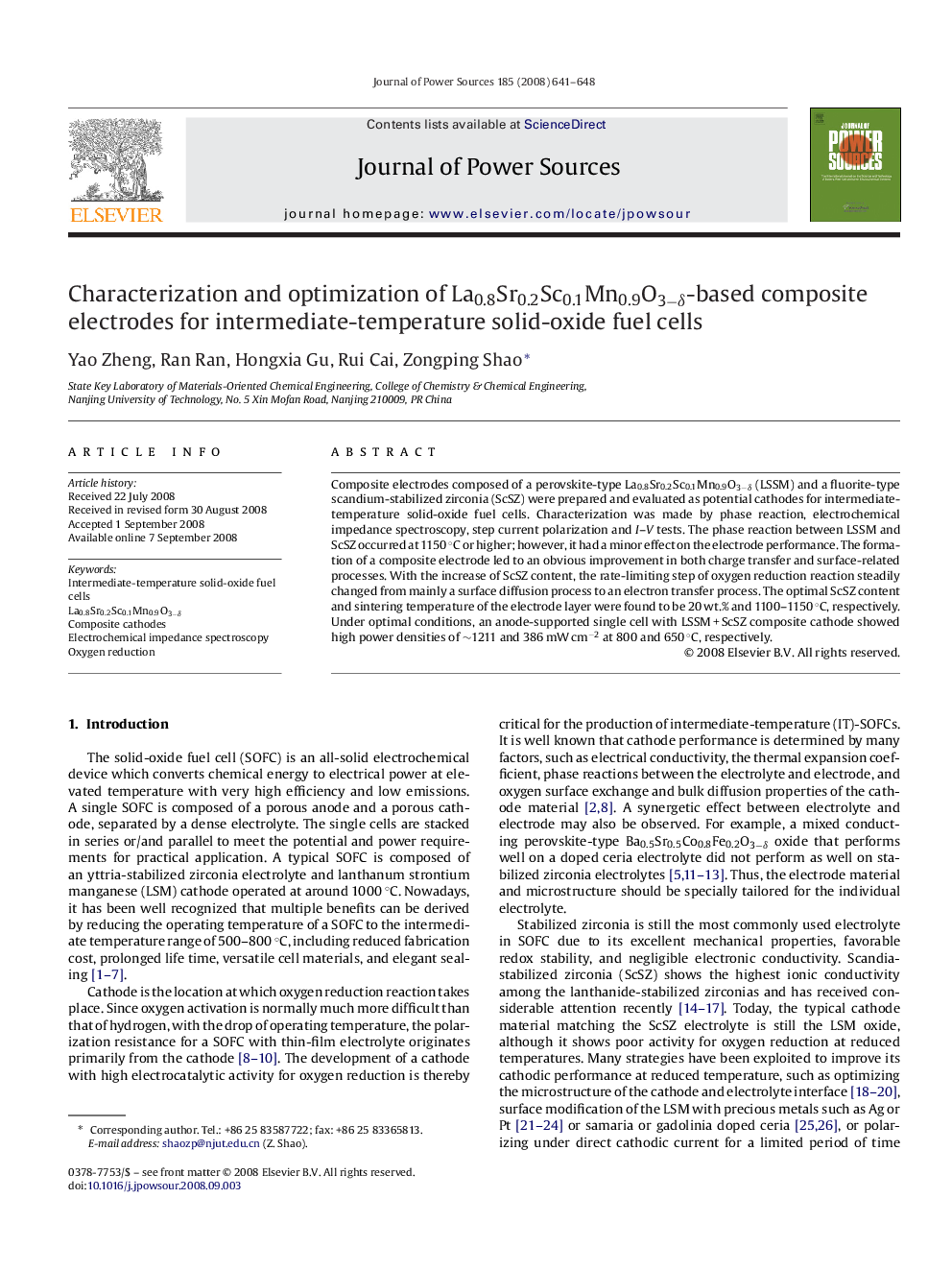| Article ID | Journal | Published Year | Pages | File Type |
|---|---|---|---|---|
| 1290162 | Journal of Power Sources | 2008 | 8 Pages |
Composite electrodes composed of a perovskite-type La0.8Sr0.2Sc0.1Mn0.9O3−δ (LSSM) and a fluorite-type scandium-stabilized zirconia (ScSZ) were prepared and evaluated as potential cathodes for intermediate-temperature solid-oxide fuel cells. Characterization was made by phase reaction, electrochemical impedance spectroscopy, step current polarization and I–V tests. The phase reaction between LSSM and ScSZ occurred at 1150 °C or higher; however, it had a minor effect on the electrode performance. The formation of a composite electrode led to an obvious improvement in both charge transfer and surface-related processes. With the increase of ScSZ content, the rate-limiting step of oxygen reduction reaction steadily changed from mainly a surface diffusion process to an electron transfer process. The optimal ScSZ content and sintering temperature of the electrode layer were found to be 20 wt.% and 1100–1150 °C, respectively. Under optimal conditions, an anode-supported single cell with LSSM + ScSZ composite cathode showed high power densities of ∼1211 and 386 mW cm−2 at 800 and 650 °C, respectively.
